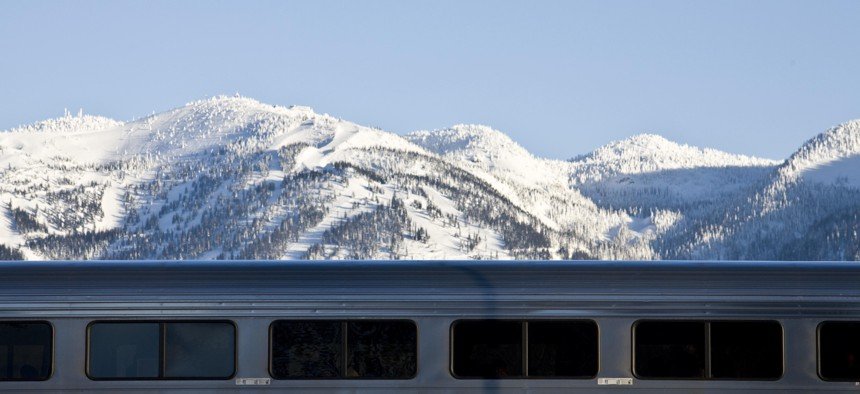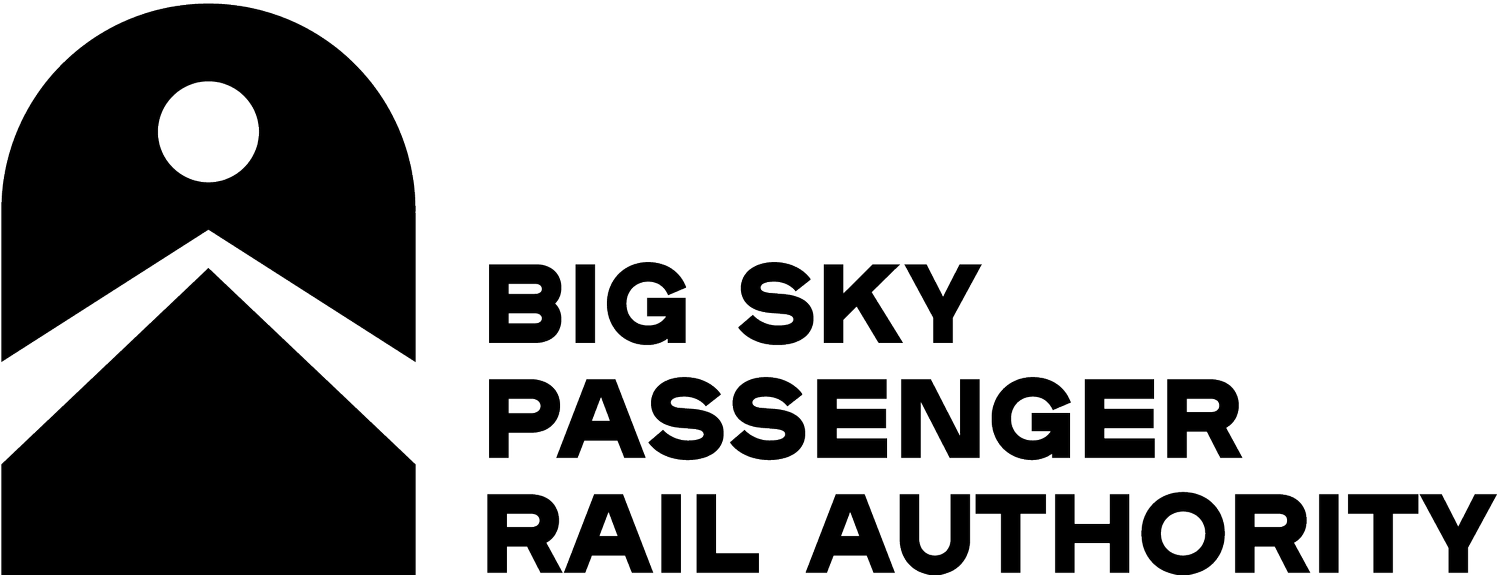
Passenger Rail Facts
What is the goal of the authority?
To create a transformational project for Montana — establishing safe, reliable and affordable inter-city, long-distance passenger rail service through southern Montana.
Why a passenger rail authority?
It’s high time to try a different approach. There is currently no government agency or public institution in Montana that oversees expansion of passenger rail service through the southern tier of the state. A regional passenger rail authority, allowed under Montana state law (MCA 7-14-16), would fill this gap by creating the governance structure to investigate, analyze, seek or accept funding for, and facilitate implementation of, long-distance, inter-city rail service across southern Montana.
Why counties?
While it is certainly within the power of the Montana state Legislature to establish a regional rail authority (as many other states have done), Montana code grants counties the authority to do this. So, in the absence of legislative leadership, counties can create our own destiny and act now.
How much is this going to cost?
This can be interpreted in two ways: (1) How much is it going to cost to restore passenger rail service to southern Montana? or (2) How much will it cost to operate a regional rail authority?
First, the cost of restoring rail service (be it along the old North Coast Hiawatha or some other alignment) is going to be a function of the specific route(s) chosen, frequency of service, how the system will be operated, and the nature of any public-private partnership that might be forged. These are questions that a rail authority is well-poised to investigate.
Second, the cost of operating a rail authority will largely be a function of the rail authority itself, since it will be an independent governing board with members appointed by county commissioners. Once board members are appointed, they will determine its priorities, how often the board meets, and what resources the board needs to function — not unlike a school, fire or sewer district. State law allows counties to provide financial or in-kind support to the authority if they so choose, but they are under no obligation to do so. It also allows the authority to place before voters in participating counties a mill levy for authority operation.
With all our other infrastructure needs, why focus on rail?
Far too often, counties focus inwardly on transportation issues without recognizing the opportunities to collaborate with other jurisdictions on broader, regional goals that will accrue very real benefits to communities. Rail is a great example of this. This is not an either/or option. We can focus on local infrastructure needs while at the same time working on and advocating for larger projects, like rail, that require multi-jurisdictional cooperation and collaboration. Moreover, there are huge environmental and economic benefits to rail that warrant adding it to our transportation mix.
Does my county have only one chance to join the authority?
No. Adopting the initial joint resolution to create a regional passenger rail authority will immediately give all participating counties a seat at the table. However, once the authority is established, additional counties can petition to join the authority.
Does restoring passenger rail in southern Montana mean the end of the Empire Builder along the Hi-Line?
Absolutely not. The bulk of Montana’s population resides in the southern part of the state and is not using the Empire Builder, which is a primary driver for expanding service in the state. Adding additional connectivity will strengthen the overall system and provide a much needed transportation option for business travelers, tourists, students, seniors and others. Adding service will complement, not supplant, existing service along the Hi-Line.
Will the train go through Butte?
It depends. To begin with, restored passenger rail service would likely use the line that travels through Helena since the line east of Butte over Homestake Pass has been out of service for decades. With enough money and political will, though, anything is possible. In addition, Butte-Silver Bow County would directly benefit if passenger rail service were ever restored from Salt Lake City north. All options remain on the table.
Are we simply talking about bringing Amtrak back to southern Montana?
Likely, but not necessarily. Even if it is Amtrak, there is room for creativity in terms of public-private partnerships.
Are there other options besides the old North Coast Hiawatha route?
Yes. All options are open for discussion, including investigating the feasibility of re-establishing north-south connections to Denver or Salt Lake City.
What is the likelihood of restoring passenger rail service to southern Montana?
Zero if we do nothing different than we have in the past! Creating a regional rail authority is part of the long game of setting ourselves up for success and thinking creatively about a larger vision and the initial steps along the way to make that happen. As important as advocacy groups are to this effort, they are not enough. We need the governance structure to collaborate across jurisdictions and with the private sector to seek funding to conduct studies and, ultimately, to implement a project.
What are the next steps after counties adopt the joint resolution to establish the regional rail authority?
The joint resolution will create a regional rail authority board of not less than five directors, as decided on by the participating counties. The number of directors to be appointed, their term of office and their qualifications will be provided for in the joint resolution. After passage of the resolution by the board of each county, the boards shall jointly appoint the initial directors of the regional rail authority. The directors will then have the authority to adopt rules as it considers necessary for its own administration, management, and governance.
Are donations tax deductible?
Yes, donations are tax deductible.
